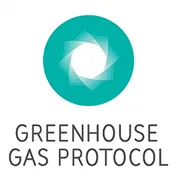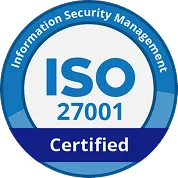.svg)
Industry leaders use Mavarick to automate supplier data, gain clarity, and accelerate decarbonisation.
.svg)












Calculations aren’t standardised, transparent, or easily auditable.

Reporting shows emissions but not how to cut carbon or cost.

Supplier submissions are inconsistent, incomplete, and error-prone.

Missing supplier inputs hide real Scope 3 and cost exposure.

Designed so manufacturers can move beyond manual emissions work - automating data, surfacing trusted intelligence, and guiding real decarbonisation decisions to reduce both carbon and cost exposure.

Collect, validate, and complete supplier emissions data with AI-powered workflows that remove errors and close gaps.
Automates supplier data, fills gaps, and builds a complete, trusted emissions view.
Identifies the materials, suppliers, and logistics choices that reduce carbon and cost exposure.
Guides teams toward the most impactful actions with clear, quantified trade-offs.

Predict emissions, standardise BOM-level product carbon footprints, and roll up supplier data into an audit-ready Scope 3 view.
Produces audit-ready calculations mapped to CSRD, CBAM, GHG Protocol and evolving standards.
Highlights compliance gaps, carbon-cost risks, and upstream exposure across your supply chain.
Delivers traceability for every figure, assumption, and supplier submission — instantly reviewable.
.webp)
Move beyond compliance use AI to highlight cleaner
suppliers, greener materials, and lower-emission logistics decisions.
Generates consistent, standard-aligned PCFs using supplier data, BOM structures, and AI modelling.
Compares actual vs predicted PCFs to flag anomalies and improvement opportunities.
Provides product-level insights to influence design, sourcing, and cost-efficient decarbonisation.

Stay ahead of CSRD, CBAM, and GHG Protocol with multi-framework alignment and seamless ERP, PLM, and Catena-X data exchange.
Automates supplier requests, reminders, validations, and quality scoring — at any scale.
Benchmarks suppliers on emissions, cost efficiency, and readiness against standards like SBTi and Catena-X.
Surfaces cleaner, more cost-effective supplier options with transparent impact modelling.
.webp)
%201.avif)
Cuts supplier and logistics emissions 10–40% while lowering carbon-linked costs 5–15%

Reveals best suppliers and materials, improving carbon-cost trade-offs and sourcing speed 3×

Automates emissions requests and validation, reducing manual supplier workload 60–80% at scale

.webp)
.webp)
Three AI-powered steps that transform
supplier data into an audit-ready foundation.
.webp)
.webp)
Close every data gap. See the full Scope 3 picture.
.webp)
.webp)
Move beyond reporting to real-world impact.
.webp)
.webp)
Compliance made simple. Confidence built in.
“Our collaboration with Mavarick has shown that advanced, AI-driven approaches can identify meaningful opportunities to reduce emissions while improving cost efficiency across our supply chain. It has provided far greater clarity on where to focus, turning complex data into practical guidance for operations and logistics. This work aligns strongly with Volkswagen’s goTOzero ambition by demonstrating how we can drive more resource-efficient manufacturing at scale, and we are already extending these methods across additional sites and value-chain partners to support continued sustainability and competitiveness.”






